The Ripper’s Lorry Murders 8: Hammersmith & Leicester
by TIM HICKS & CHRIS CLARK
~~~~~
Until now, the conventional wisdom was that all of Sutcliffe’s attacks were launched from his car. Chris however was convinced that this was not so and conducted his research on the basis that Sutcliffe used his lorry on some of the murders.
In this article, the authors have collated all the cases Chris has identified as committed from Sutcliffe’s lorry, not his car. They are shown as V5 in Column F “Vehicle Used” in Table 13 below:
Table 13 Victim list and vehicles used
The cases are not in chronological order for editorial reasons of space management and to group some cases by force area in each article. They are in nine parts as follows:
- The Ripper’s Lorry Murders Part 1. Bedgebury Forest Woman
- The Ripper’s Lorry Murders Part 2. Ilkley: Ilkley: Proof positive
- The Ripper’s Lorry Murders Part 3. More ligature killings.
- The Ripper’s Lorry Murders Part 4. Doncaster and Sheffield
- The Ripper’s Lorry Murders Part 5. Bristol, Sussex and Essex.
- The Ripper’s Lorry Murders Part 6. “Hope”: More witnesses.
- The Ripper’s lorry murders Part 7. Leicester
- The Ripper’s Lorry Murders Part 8. Hammersmith
- The Ripper’s Lorry Murders Part 9. London
For editorial reasons, they may not be published in chronological order.
Background: Sutcliffe’s access to lorries
“Sutcliffe then started employment as a lorry driver on the 29th of September of 1975 working for a Common Road Tyre Company, Okenshaw situated at the junction of the M62 Motorway and a spur off the M606 into Bradford; the work involved short and medium distance hauls all over the North and the Midlands. He used the experience to familiarise himself with the network of motorways and trunk roads linking its destinations to each other including the best access routes to many towns and city centres an art that he perfected from his already overall extensive knowledge that he had gained from socially driving around the North of England, the Midlands and London and Home Counties.
However after just over a fortnight’s employment on 15 October 1975 he was caught stealing second hand tyres and the police were informed. Sutcliffe was arrested and during the following year after entering a guilty plea at a later court hearing on 5 March 1976 he was fined and he was later sacked in that April for bad time keeping.
In October 1976 Sutcliffe finally found work as a lorry driver for T&WH Clark (Holdings Ltd) situated on the Canal Road Industrial Estate between Shipley and Bradford. They were a small engineering transport firm and working for them took him all over the country and involved a lot of overnight stops where he would use the bunk bed in the rear of the cabin and he was once on his own again with no one to account to and left to his own devices. He started proving himself over several months in one of the firm’s four and six ton big rigid Lorries and then onto a Ford Transcontinental which at £250,000 was the most expensive and advanced HGV vehicle in England at the time.
Sutcliffe clearly suffered from ‘little man syndrome’ as well as ‘obsessive compulsive disorder’ and enjoyed the height, mass and speed of the lorry; as well as spending hours cleaning and polishing both the inside and outside of the cabin whilst awaiting loading and unloading. This would have removed any forensic evidence from the cab.
At work Sutcliffe was one of Clark’s most conscientious drivers who kept immaculate logs and repair records. His workmates saw him as a loner who never showed any sign of violence did not swear or speak crudely about women although he christened his lorry ‘Wee Willie’ which was a source of amusement for them. Sutcliffe was well liked by his bosses and colleagues alike and was recognised to be brilliant at roping-and-sheeting large and often difficult loads. He was the person that everyone turned to when they got a delivery ticket for an unfamiliar town he had ‘A-Z’ street maps for every possible destination.
At Clark’s at the beginning of 1980, Sutcliffe must have felt he had got a really secure job even a job for life. The firm had been forced to sack all their drivers for alleged thefts from the loads but not him. He had been the one exception the one driver Chairman Tom Clark felt he could trust. Yet there were those at Clarks who had noticed Sutcliffe’s habit of occasionally turning up at work with false number plates on his car. A fact considered insignificant by his workmates, at least until the first weekend of 1981.
The management had been so impressed with Sutcliffe regarding him as possessing all the virtues required by the best lorry drivers that he was chosen to appear in a promotional brochure for the firm. In the following photograph he is shown hair in place, beard neatly trimmed as usual behind the wheel of ‘Wee Willie’ and a giant enlargement of the photograph was given pride of place in the entrance to the firm’s offices.”
It is now clear that Sutcliffe used his lorry -not just his car- to commit murders. This verifies the authors belief that Sutcliffe’s offending was not just confined to West Yorkshire and Greater Manchester, but potentially covered every force area in the UK that Sutcliffe’s work as a lorry driver took him to, as shown in the lead illustration. That is, all over England and parts of Southern Scotland.
A ligature could have been used in several crimes that I have researched, including the Nude in the Nettles murder. What is not known as I do not have the pathologist reports on them is whether a ligature was found to have been used in any other of his admitted catalogued crimes prior to the summer and autumn of 1980 when he used a ligature in his last three attacks.
Sutcliffe was forensically aware and never fouled his car with forensic evidence from his victims’ death. The authors believe it possible that when using his lorry, Sutcliffe:
- Enticed victims into the cab then drove them to the place where they were subsequently killed on the basis that they were going there to have sex.
Or alternatively:
- The victim was enticed into the cab to have sex (the lorry had a sleeping space in the cab), then murdered in the cab using a ligature, which left limited forensic traces, on the basis that a prostitute would not agree to being driven away from her patch, when she could have sex in the cab.
Sutcliffe was very well regarded at Clark’s Transport for keeping his lorry clean and for being meticulous about cleaning the cab. Obviously to remove any forensic evidence.
Cold case investigations and the media
A major factor in progressing cold cases is media coverage. It follows from this that all cold case units across all forces should be doing everything they can to generate media coverage in the hope that it will generate a fresh witness. As an article of faith, the authors always include an appeal for information on every case they cover. This is to cooperate with the police and to try and move the cases forward.
This strategy has worked very well with the “Nude in the Nettles” case. (NYE coverage below)
Because it generated a new key witness, former Councillor Norman Murphy, who came up with important information that could help identify the victim who was a Scarborough resident the NYE has called “Hope”. He also identified that the Yorkshire Ripper Peter Sutcliffe regularly visited Scarborough and may have been “Hope’s murderer.
As a result of these appeals two new witnesses have come forward who have provided additional evidence on Sutcliffe.
Both ladies are Sutcliffe victims that survived. Their stories are told below and have never been told before. Their evidence is of crucial importance. Both to the “Nude in the Nettles” case and – the authors believe – numerous unsolved cold cases across numerous force areas.
The authors have anonymised them as “Child A” and Child “C”.
Child A: The Hammersmith/Sunderland attempted murders
Child A had an unsettled childhood. She lived in Fulham, London and at age about thirteen or fourteen in about 1977 or 1978 she and her friend Child B then aged about fourteen decided to run away from home. They both went to the roundabout at Hammersmith at about midday to hitch hike a lift away from London.
Child A states that Peter Sutcliffe stopped in the Clarke’s lorry, chatted to them for a short while and offered them a lift to Sunderland.
Child A sat next to the door, Child B sat next to Sutcliffe. They instantly sensed that Sutcliffe was dangerous and they were in grave danger. Child A admitted to me that she was terrified. Sutcliffe drove non-stop towards Sunderland, stopping once. One of the girls confronted him and asked him why he had stopped and he replied “what do you think?“. He then jumped out of the lorry and went to urinate at the side of the lorry. He then returned and started driving after “looking again at us both very eerily”.
Child A was frightened and wanted to get out of the cab. She was looking out of the window for the sign to Sunderland and when she saw it she asked him to drop them off. Sutcliffe left them in an open area with cars parked. They tried several of them and found one that happened to be left open. They slept there until the morning, when they made their way to Sunderland where they met some people who let them stay in their place for a while.
They had no money and tried to claim unemployment benefit. The police were called and they were taken to Sunderland Police Station. The police asked what they had been doing in Sunderland and if they were prostitutes which they both denied.
Happily they had both been reported missing by Child A’s Father, who was contacted by Sunderland Police. He collected her and took her back home to Fulham.
Child A has confirmed that she is certain the driver was Sutcliffe.
“When Sutcliffe was arrested I saw the photograph of Peter Sutcliffe and said “that’s the man he looks like him”. It was the big black eyes that stood out to me, the black hair and the thick bushy sideburns. This is what I remember of being in the lorry with Peter Sutcliffe.”
Child C: The Leicester attempted murder
Child C narrates her story in her own words below:
“I happened to be watching a documentary this evening on the Yorkshire Ripper. For what it’s worth it wanted to let you know that I believe I had an encounter with Peter Sutcliffe in what I believe would have been 1980 on a road called Checketts Road in Leicester. I vividly remember that day because he scared me to no end.
His truck was parked on the opposite side to me and he crossed over to my side of the rd. I was on my way home from school and I remember the time to be around 3.40 pm as he asked me what time it was. He then asked me if I was free which scared me so I said ‘no’ and started walking faster. I looked behind and he was following me. I started running and he also started running right up to my street. Luckily he didn’t see me go into the house.
I peeked through the window and saw him walk all the way to the end of my street and back. I was terrified. I recognised him from the pic in the papers following his arrest a year later. I did not report this as I did not want to be associated with him. I’m not sure whether this disclosure matters at all but I had to let my story and him out of my system.
After watching the documentary last night, I Googled to check whether it was ever proven that he went past Leicester during his killing spree. Surprisingly I came across the Leicester Mercury article which I have just realised was from 2013. It had your email address and mobile number. I realised that your investigation or interest was linked to murders committed much earlier in Leicester but it seemed like a good idea to mention my encounter and lucky escape.
I had thought of reporting my encounter to the police numerous times but would not have known how best to go about it. He had parked the truck by the school on the opposite side of the road. He walked across the road clad in a denim shirt and trousers, very short and skinny. I remember not being scared at this point. I believe I had walked passed Bernard’s Rd but before Victoria Rd. My route that I took every day and on that day was Checketts Rd up to Loughborough Rd and crossing at the traffic lights and walking towards home. I was lucky that when I approached the traffic lights, the road was clear but when he approached it, there was traffic giving me time to get to my house in the middle of the street before he reached the corner. I would have been 15 the time but always looked a couple of years older and yes I was in my school uniform although it could have been mistaken for normal clothing; yellow shirt, blue skirt and cardigan. I know it was a warm day with blue skies. I don’t remember wearing a jacket just the shirt, Cardigan and skirt. I also remember that it was the beginning of holidays and we were let out early from school. So that would probably be the Eastern break or half term break after Easter. I don’t think it would have been any term breaks after that as the temperatures would have been much higher. Also on the account that it was really quiet on Checketts Rd makes me think it was not a Friday as perhaps I would have expected more people around.
I don’t remember that there was a cafe on Checketts Rd but there was a pub, now called the Flamingo, a restaurant, at the corner of Cheketts Rd and Loughborough Rd which he could have frequented. Also what is now The Jungle Club, and Indian restaurant used to be a Conservative’s Club. I do remember that on that day, Cheketts Rd was eerily quiet; there was absolutely no other person on that Rd although there were cars driving past. I hope this information helps.”
Child C’s case is to be covered in another article concerning the murder of Rosina Hilliard and Caroline Allen in Leicester, for which the authors believe Sutcliffe should also be considered as a suspect.
The authors’ assessment of Child A and Child C’s evidence
Both authors are completely satisfied that the witnesses are entirely credible and their identification of Sutcliffe is accurate:
- Thirteen-year-old school girls fitted with Sutcliffe’s victim preferences. Child A has confirmed that both she and Child B were clearly under-age. Child C was in school uniform. Tracey Browne was fourteen when she was attacked on the 27th of August 1975 (Case 42).
- Both witnesses recognised Sutcliffe from photographs published immediately after his arrest.
- The authors believe that Sutcliffe was hunting further afield than West Yorkshire and Greater Manchester, because by 1977/1978 he knew that the police surveillance in the West Yorkshire red light districts made it more risky for him to operate there. Hence his foray into South Yorkshire in 1981, when he was arrested. It is clear that by 1977 – 1980 he was probably hunting in different force areas. In 1980 Sutcliffe was driving a truck making deliveries all over England and may have had a reason to be in Leicester. The abduction point for Child C at the junction of Melbourne Road and Berners Street is about two miles from Checketts Road and about 20 minutes driving time from the M1, Sutcliffe’s direct route home to Bradford. The authors believe he targeted children because they were less likely to be able to resist him, than a fully grown woman.
- During 1977 and 1978 Sutcliffe’s wife Sonia frequently went to stay with her sister Marianne and her family in Alperton. Sutcliffe was on very friendly terms with Marianne. At his 1981 trial, a friend told a news reporter that Sutcliffe carried a photo of her in his wallet clad in just her underwear. Peter Sutcliffe would take Sonia and collect her and this would give him further ample opportunity to be in London when not lorry driving. He had an extensive collection of A-Z guides, delivered to London regularly and knew London
- The roundabout at Hammersmith is convenient for the North Circular Road and then on to the M1. It would be a convenient route for Sutcliffe to drive to Sunderland after making a collection in London, or visiting his sister-in-law. (See map)

Map of North West London
- Sutcliffe delivered to Sunderland docks regularly, so the destination point is entirely consistent with Sutcliffe’s movements.
- Child A is a practising Christian, mother, intelligent and articulate. I believe she is a very credible witness. The authors have advised her to contact the Metropolitan Police and she has done this.
- Child A remembers that the bottom of the lorry was painted white. As you can see from the photograph below, this is consistent with Sutcliffe’s Clark’s Transport lorry.
- Most photographs of Sutcliffe show him with a full beard. However, as you can just see from this photograph from about 1976, Sutcliffe had sideburns for at least some of the time when he was driving the lorry for Clark’s transport. This Verifies Child A’s identification.

Sutcliffe in the Clark Transport lorry he used to abduct two girls in Hammersmith in 1977
The authors analysis of the impact of Child A’s evidence
Child A and Child B were wearing casual clothing, but it would have been clear to Sutcliffe that they were well under-age and should not have been hitch-hiking. But Sutcliffe nevertheless picked them up. He was taking a huge risk. As soon as they got into his cab, he was committing two abductions. Should he be stopped by the motorway police driving with two underage girls away from home, he would no doubt be arrested and the entire story of his involvement in the Ripper investigation would have come out. So why did he take this huge risk?
The authors are in no doubt that while he was in London he was actively looking for a hitch hiker to entice into the cab and murder.
The authors believe that Sutcliffe was varying his modus operandi both in terms of the vehicle he was using (a lorry, not a car), the method of contact (enticing a hitch-hiker into the cab of a lorry), the victim selection (hitch hikers) and the locations (London and Leicester) would ensure the murders would not be connected to the Yorkshire Ripper murders.
So why did Sutcliffe spare Child A and Child B? Both girls were physically fit and alert. They had confronted him and demanded to know why he had got out of the lorry, indicating they were assertive and suspicious of him. The authors believe Sutcliffe assessed that he could not kill both girls quickly and quietly one after the other. If he attacked one and the other started screaming and ran off, it could result in him being detected. Sutcliffe was wary and street-wise. We suspect that he aborted the attack because it was too risky.
Neither Child A or Child B got out of the cab between Hammersmith and Sunderland. Chris believes that if one of them had done so alone with Sutcliffe, Sutcliffe would have attacked one and then attacked the other. Murdering them quickly, one by one. But a fight in the cab with two hysterical screaming teenagers was just too risky.
Child A’s evidence has a major impact on cold case investigations across the UK. It shows that:
- Sutcliffe abducted children, an aspect of his offending that was previously unknown.
- He used his lorry for his attacks women. He was previously thought to only use cars.
- He used his lorry to operate across a much wider geographical area and was offending in London. He was previously thought to operate only in the West Yorkshire, Greater Manchester and South Yorkshire Police areas. (See lead illustration map)
- The flyover at Hammersmith is close to the place where Elizabeth Parravicini was murdered on the 8th of September 1977 (Case 36). Child A’s evidence verifies that he frequented the area of the murder in 1977. (See map). The authors believe that Sutcliffe should be considered as a suspect in this murder.
- The evidence of Child A verifies that Sutcliffe picked up and attacked hitch hikers from his lorry. This supports the authors belief that he should be considered as a suspect in the murders of Jacqui Ansell Lamb (murdered 8/3/1970 Case 11 abducted M1 Hendon), Barbara Mayo (12.10.1970 Case 12 abducted M1 Hendon body found a mile from the M1), Marie Burke (18.04.1972 Case 16 abducted M1 Brent Cross) and Caroline Allen (4.10.1974 Case 24 Abducted Nottingham, body found in Leicestershire 3.12.1975), who were all hitch hikers.
- Regarding the “Nude in the Nettles” murder of “Hope”, it vindicates the NYE’s belief that Sutcliffe used his lorry to commit murders, that he moved victims up the A19 on his way to Sunderland Docks and offended in the North Yorkshire, Durham and Northumbria Force areas. It also supports former SBC Councillor Norman Murphy’s evidence to the NYE.

As always, the authors will finish with an appeal for information.
Leicestershire Police appeals for information
Leicestershire Police have issued this appeal for information:
“All unsolved major crime cases remain subject to periodic review based on emerging information and advances in forensic techniques, we are aware of the previous assertions in numerous articles and publications nationally, that Peter Sutcliffe may have been responsible for other murders across the country, including Leicestershire. Reviews of those cases have not established a link; that said any information which may be relevant to those investigations and have an impact on the potential outcome will always be assessed taking into account known facts and information about the case.”
Anyone who has any information about an unsolved case or an ongoing investigation should contact the lead force in the relevant enquiry on 101.
NYE appeal for information
The NYE would also like to appeal for information in connection with the “Nude in the Nettles murder” (of “Hope”).
“Hope”
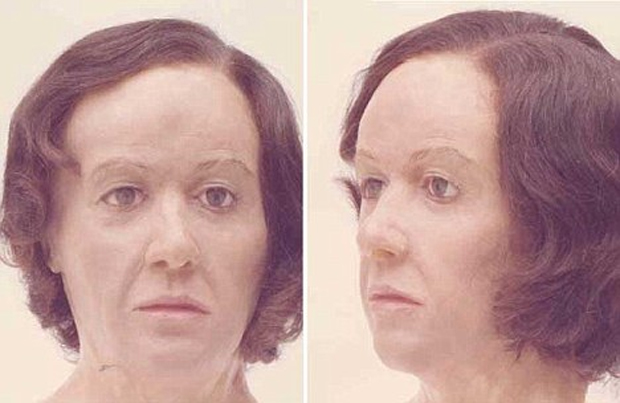
Three-dimensional wax reconstruction of the victims head and face
- She was 5’ 2” in height, aged between thirty-five and forty.
- She had a slender build and wore her natural dark brown hair in a page-boy style.
- She had given birth to two or three children and had a displaced septum between her nostrils.
- Her toenails were painted pink – the varnish coming from the Max Factor Maxi range.
- She would have worn a size four shoe.
- Staining on her teeth revealed that she was a heavy smoker that did not look after herself.
- She had a Yorkshire or Lancashire accent, but may not be originally from Scarborough.
- All her upper teeth were missing, she had an upper dental plate fitted, and she had only six lower teeth.
- She had an old fracture to her right ankle and an abnormality to her neck vertebrae which would have caused backache.
- Do you remember someone like this from the shelter in Victoria Street?
- Were you a police officer in Scarborough in the period 1977 – 1979? Did “Hope” come into custody for being drunk and disorderly, soliciting or vagrancy, or did you see her at the shelter?
- Were you a social worker, health care professional, or member of the Salvation Army that came into contact with “Hope” and other down-and-outs from Victoria Road, Scarborough?
- Did you find a dark blue quilted body warmer, blouse, jumper, dark mini skirt discarded along on the A170?
- Did you hang a full set of formal female dress ware on a coat hanger suspended from a tree by the hairpin bend on Sutton Bank?
- Did you serve in the RAF at RAF Linton-on-Ouse, or RAF Fylingdales in the period 1979 – 1984?
Peter Sutcliffe
- Did you see Peter Sutcliffe or a lorry from TW Clark (see image above) in Scarborough or any of the locations mentioned in the article?
- Did you work at Victoria Road, Roscoe Street, Andrews of Scarborough (motorcycle dealers), Deardens builder’s merchants, North Sea Winches, D Wray & Sons, Scarborough Ignition Co Ltd, Pickups, or the old goods yard which is now Sainsburys?
- Were you a driver for Boro Taxis next to the café, or did you use taxis from there?
- Did you frequent the café in Victoria Road and see Peter Sutcliffe there?
- Did you know the café owner Iris Scott?
If you have any information that you want to pass on confidentially, you can talk to a journalist by contacting the North Yorks Enquirer using our letters@nyenquirer.uk address. All responses will be treated in the strictest confidence.





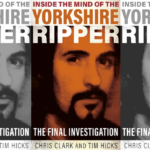

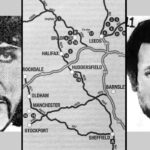
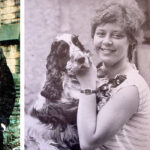
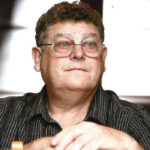
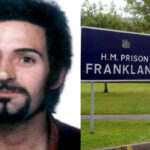

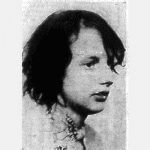














Comments are closed.